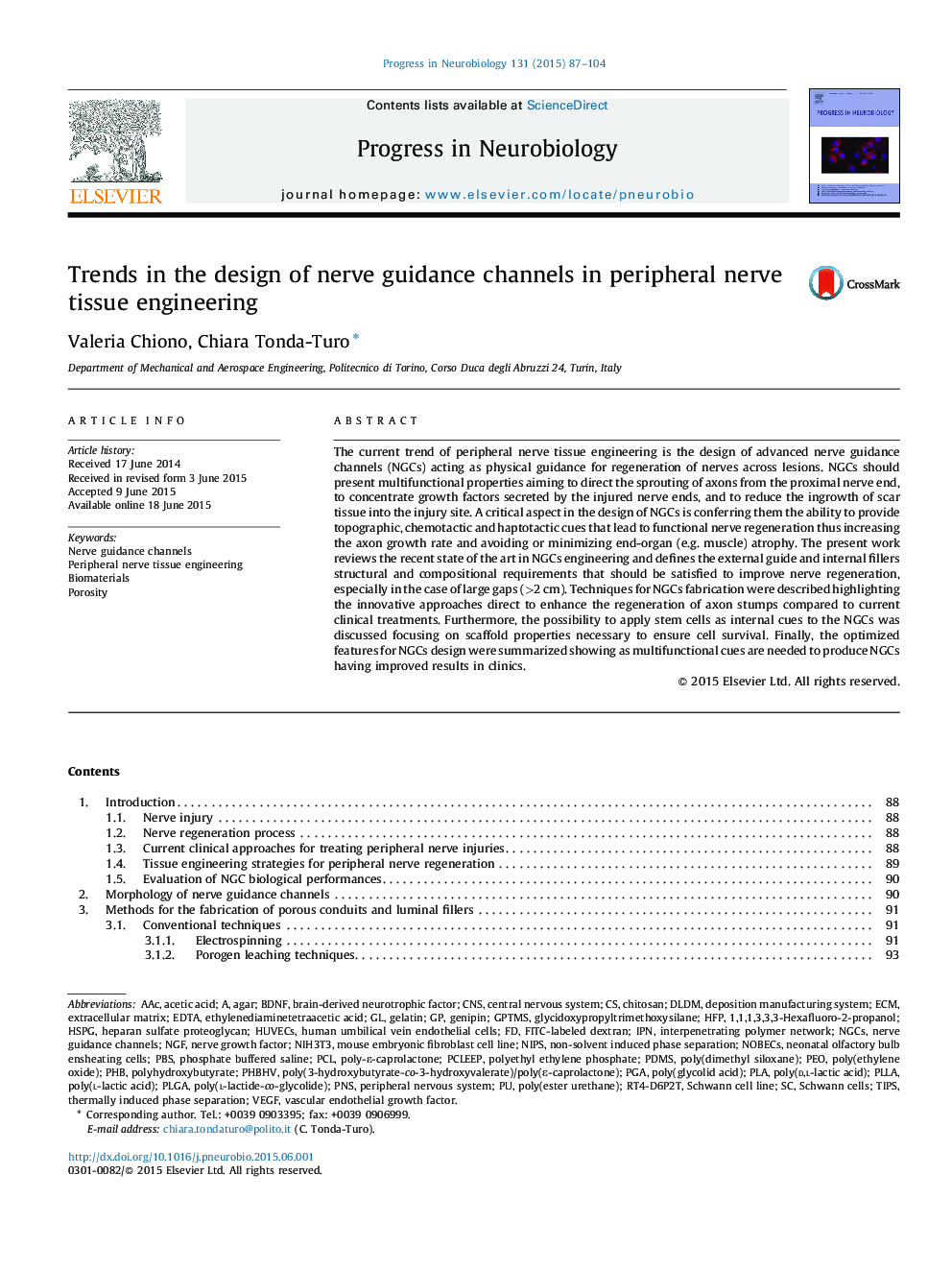| Article ID | Journal | Published Year | Pages | File Type |
|---|---|---|---|---|
| 4353267 | Progress in Neurobiology | 2015 | 18 Pages |
•Current trends in nerve guidance channel development.•Design strategies for external guides and internal fillers fabrication.•Chemotactic, haptotactic and topographical cues to direct neural cells response.•Advanced cellularised scaffolds enhancing tissue regeneration.
The current trend of peripheral nerve tissue engineering is the design of advanced nerve guidance channels (NGCs) acting as physical guidance for regeneration of nerves across lesions. NGCs should present multifunctional properties aiming to direct the sprouting of axons from the proximal nerve end, to concentrate growth factors secreted by the injured nerve ends, and to reduce the ingrowth of scar tissue into the injury site. A critical aspect in the design of NGCs is conferring them the ability to provide topographic, chemotactic and haptotactic cues that lead to functional nerve regeneration thus increasing the axon growth rate and avoiding or minimizing end-organ (e.g. muscle) atrophy. The present work reviews the recent state of the art in NGCs engineering and defines the external guide and internal fillers structural and compositional requirements that should be satisfied to improve nerve regeneration, especially in the case of large gaps (>2 cm). Techniques for NGCs fabrication were described highlighting the innovative approaches direct to enhance the regeneration of axon stumps compared to current clinical treatments. Furthermore, the possibility to apply stem cells as internal cues to the NGCs was discussed focusing on scaffold properties necessary to ensure cell survival. Finally, the optimized features for NGCs design were summarized showing as multifunctional cues are needed to produce NGCs having improved results in clinics.
